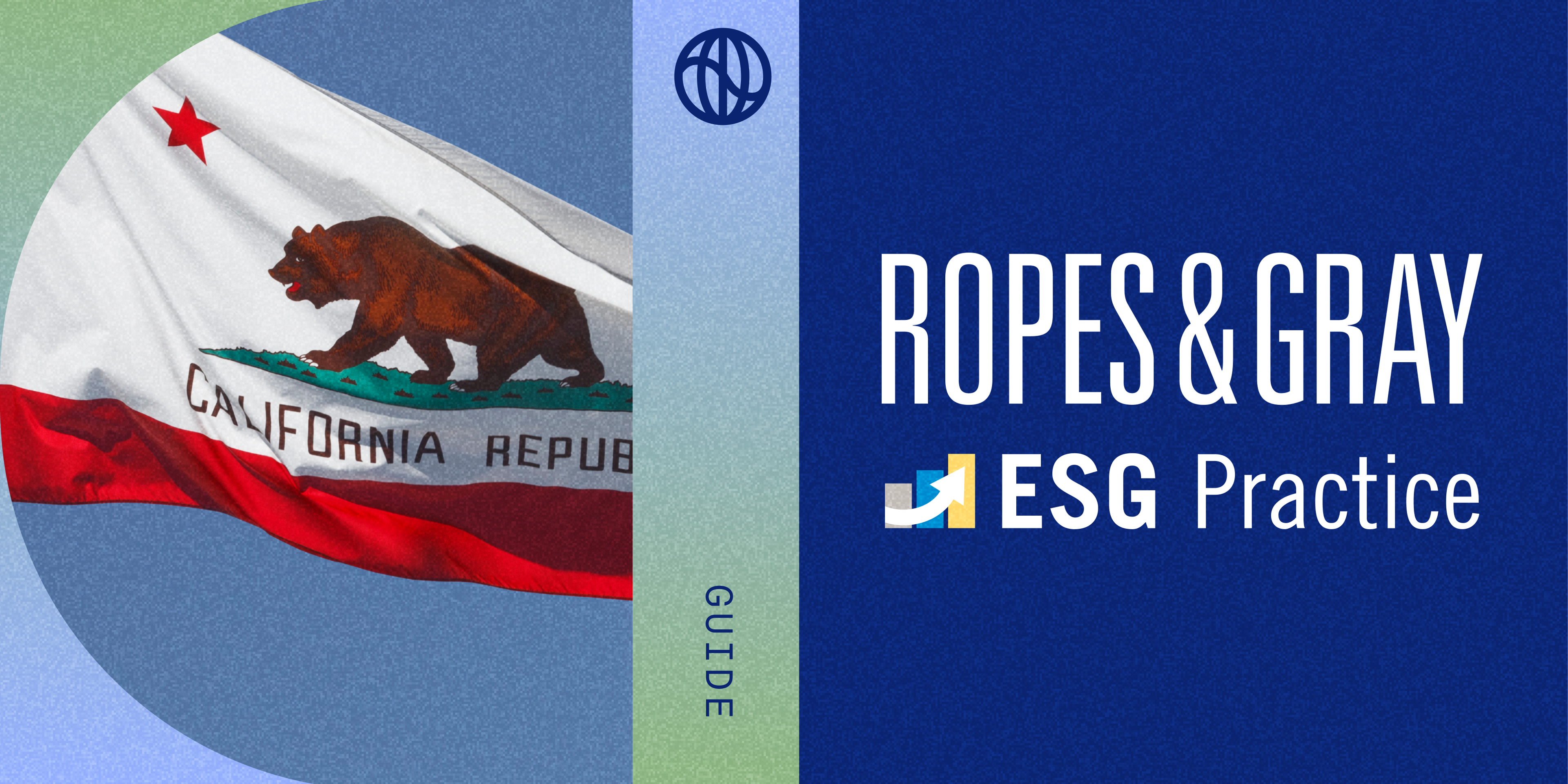“It's easy to get overwhelmed by everything in general with CSRD,’’ Lisa Steffenhagen, Senior Sustainability Manager at Grover, said during Watershed’s recent panel discussion. “I see that happening to a lot of folks, being confronted with that big ‘to do’.’’
If your company is one of the 50,000+ required to report under the EU’s Corporate Sustainability Reporting Directive (CSRD), you may be feeling this right now as you stare down the first step in the CSRD reporting process: the double materiality assessment (DMA). Creating it typically takes many months and requires gathering thousands of data points across every aspect of your business. But if you get it right, it sets you up for successful CSRD reporting, and is an extremely valuable business document on its own merits.
Watershed recently convened ESG experts and corporate sustainability leaders from Deloitte, Debevoise & Plimpton LLC, and leading global technology rental company Grover for a discussion on how to get the DMA right. Read on to hear the practical tips and first-hand experiences they shared.
What is the DMA?
The double materiality assessment (DMA) is the compulsory first step of the CSRD process, intended to help companies streamline their reporting. It is the process by which you will determine the topics that are material (i.e relevant and significant) to your report, so you won’t waste time chasing irrelevant data.
“Double materiality” refers to the two factors you evaluate: the financial impact of each ESG factor on your business (financial materiality) and the impact your business has on the ESG factor in question (economic and social materiality).
For example, biodiversity could have financial materiality for a fishing company that relies on certain species of fish being abundant near their operations, and it could have economic and social materiality if the fishing company’s operations impact ecosystems. So the fishing company would need to report on biodiversity in the CSRD.
The expected timeline for the DMA process is four to six months, but it can vary significantly, especially if you need to involve a lot of stakeholders.
How do you create the DMA?
Given the DMA’s complexity, most companies use consultants to help them with the process. It is possible for smaller companies to undertake the assessment themselves—as is evident from Grover’s experience below—but this is unusual.
Regardless of whether the assessment is driven internally or externally, the European Sustainability Reporting Standards (ESRS) offers four general steps for guidance:
- Engage stakeholders on the sustainability topics
- Aggregate the stakeholder input
- Plot against materiality thresholds
- Map the material topics to ESRS standards
These steps are high-level and not particularly prescriptive, allowing companies the flexibility to design a process that is appropriate for them, including determining who should lead.
Brian Jobe, a Partner in the Risk & Financial Advisory division of Deloitte & Touche, has worked with multiple clients on their DMAs, and has seen the process led both by sustainability teams and by the ESG controller. His DMA process with clients begins by identifying the impacts, risks, and opportunities (IROs) applicable to the organization that could be material, and then engaging with stakeholders to score and assess them.
Doing the DMA yourself: Grover’s story
At Grover, it was the Senior Sustainability Manager, Steffenhagen, who led the work, after the company decided to conduct the assessment autonomously.
“The whole process took us six to 10 months,” Steffenhagen says. “But this is mainly because the approval process took a bit longer for us because we went more into deep-dive conversations.”
Grover was also among the first companies to tackle the DMA when it was introduced last summer. There were fewer resources available to provide guidance, and so it was necessary (and time-consuming) to review along the way.
Steffenhagen explains that Grover worked through five steps to complete the DMA process:
- Examining business activities, operations, and value chain
- Creating a long list of material topics
- Engaging stakeholders
- Reviewing stakeholder input
- Carrying out the approval process
One of the biggest challenges, Steffenhagen says, was “finding the right balance of stakeholders —putting enough emphasis on the stakeholder survey and the overall engagement, also considering investor opinions, but then really making sure that expert voices are heard as well.”
Stakeholder engagement
Grover’s story emphasizes that one of your biggest goals during the DMA process is to gain a clear understanding of your organization’s current or possible future impact on relevant stakeholders.
For Grover, there are three main aspects to stakeholder engagement:
- Ongoing conversations with key stakeholders and main impact teams within the company.
- A stakeholder survey.
- Deep-dive, one-on-one conversations with topical experts.
Jobe offers additional approaches to gathering stakeholder feedback, including:
- Benchmarking against peer organizations.
- Conducting workshops.
- Collecting industry insights.
- Leveraging existing data.
Start with broad approaches like surveys and peer benchmarking, and then move on to more qualitative and exploratory methods like interviews once you’ve narrowed your focus.
“Having 30 different individual interviews is not only difficult to pull off, but also then you miss some of the broader across-the-board-insights,” says Jobe. “You don't want to have your conversation so narrow that it is focused on a subset, and you're not seeing some of the crossover.”
Who are the stakeholders involved in the DMA?
Depending on your context, these stakeholders could be internal (such as your company’s HR team, sales team, and legal team) or external (such as value chain employees, suppliers, investors, and customers).
Both Jobe and Steffenhagen advise caution around the number of stakeholders you decide to involve in your assessment—the more you have, the longer and more difficult the process becomes. Expect to be engaging with somewhere between 15 and 30 stakeholders. Strong project management is essential here to maintain focus. It’s not going to be practical or desirable to hold hundreds of interviews, for example.
How do you select which stakeholders to engage?
Jobe suggests you start by asking yourself where you sit in the value chain and who is impacted by your business. Follow the chain back—pausing to assess how much impact your company has at each step—until you get to a point where your role has no material impact. This way it becomes apparent who you need to talk to and who you need to get buy-in from.
Materiality thresholds
When it came to establishing materiality, Steffenhagen found that it was straightforward to determine what was material. The real challenge was to figure out how material a topic was. This typically involves weighting and scoring topics, and determining them to be material if they reach a certain threshold.
The ESRS does not give specific materiality thresholds: instead, it requires companies to use common sense and good judgment in their scoring.
Patricia Volhard, Managing Partner at Debevoise & Plimpton, advises companies to bear in mind that there are, of course, limits to how flexible you can be with threshold determination—because the assessment will be subject to limited assurance.
“The auditors will have to get comfortable with your assessment at the end of the day,” says Volhard. “So yes, you do have flexibility, but it needs to be reasonable and make sense.”
If a topic is found to be material or causing harm and a company has determined otherwise, then the company would rightfully not get assurance.
One question that comes up frequently: What if your company has a topic that would be material but you already have measures in place to remediate it?
Volhard tells us that such instances would be judged on a case-by-case basis. Depending on how severe the potential impact would be, you may be allowed to say that topic is not material, or you may have to report it as material and then detail the remedial measures that have been put in place.
Assurance
CSRD assurance extends to the DMA. Jobe urges companies to document all DMA discussions: “Your conclusions, as well as your considerations and process to get to that conclusion, are all going to be subject to the auditors‘ take.’’
He recommends taking a proactive approach with the auditors:
- Get a dialogue started early on.
- Let them know your plans.
- Make sure they are comfortable with your approach.
Auditors may then wish to have regular check-ins throughout the process, or they may prefer to step back for the duration and return to carry out the audit at the end.
It‘s important to note that the estimated four to six month timeline for the DMA does not include the time taken for auditing.
The DMA can have real business benefits
The double materiality assessment can initially feel like a chore, but its benefits extend beyond CSRD compliance. You also gain an incredibly valuable document that has precise insight into every area of your business.
“As you engage in this process,‘‘ says Watershed's Climate Solutions expert Toby Ayeni, “you end up surfacing a lot of data and insights about your own business that can be relevant, not just for reporting on the CSRD, but also improving your processes, your policies, your rules internally.‘‘
And once you have done it the first time, repeating it will become quicker and easier each year.
Still have questions about the DMA? Watch the full discussion. Already aced the DMA? Check out our additional expert-led sessions for CSRD Readiness.



















